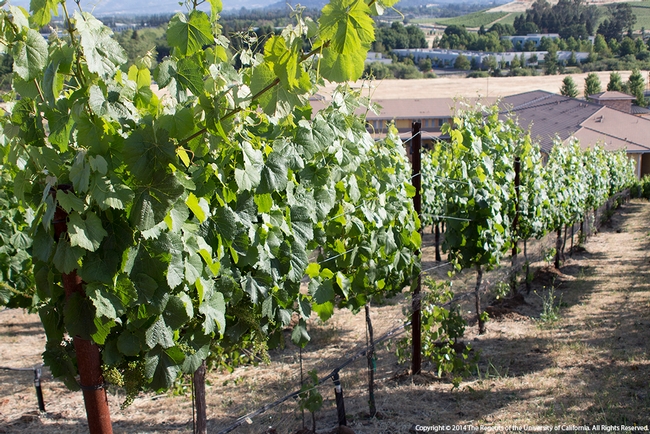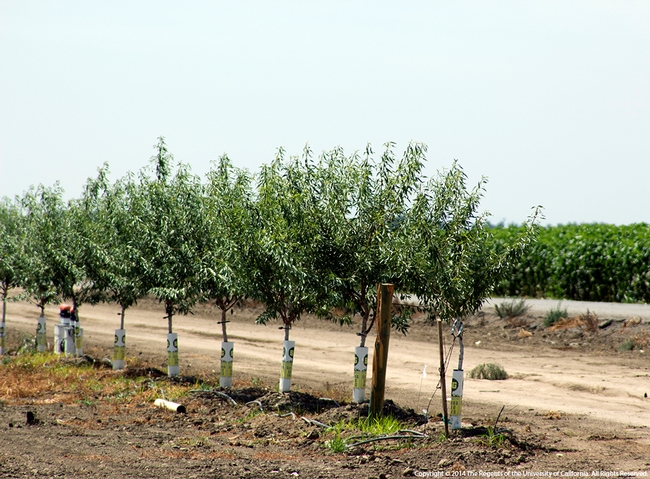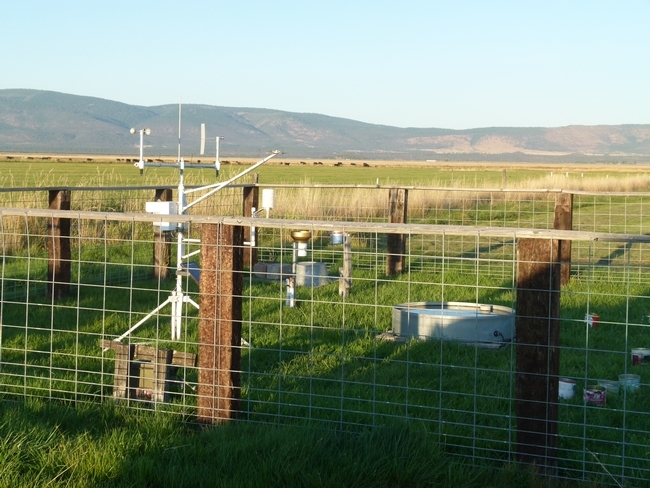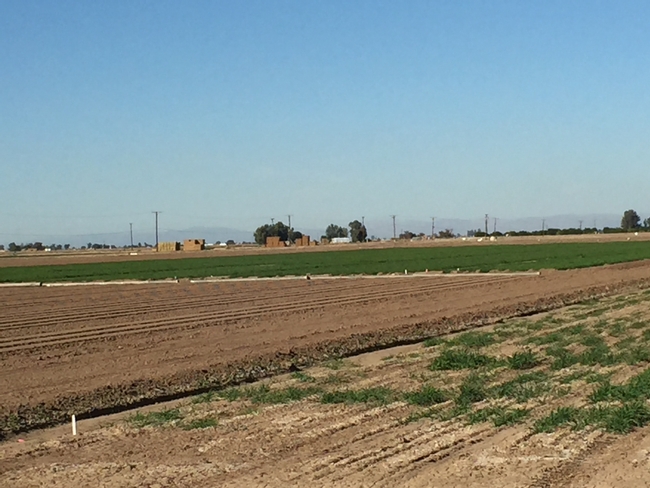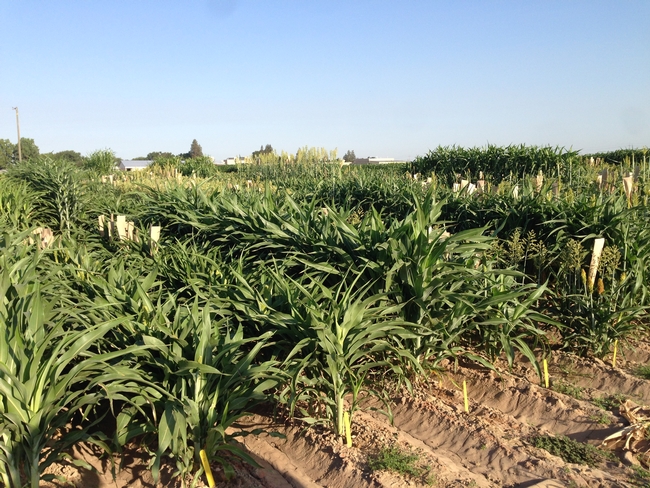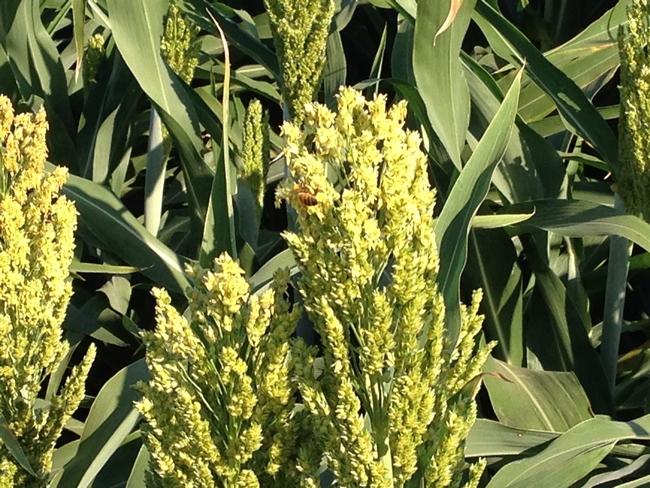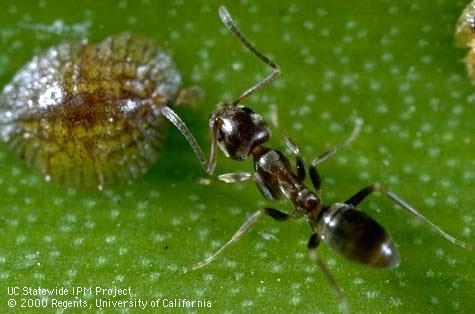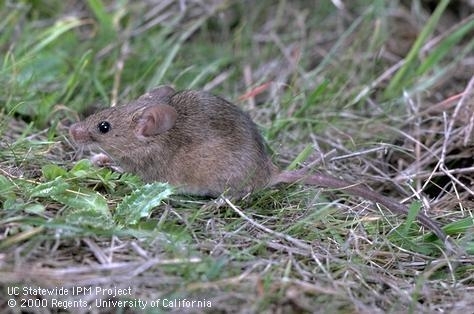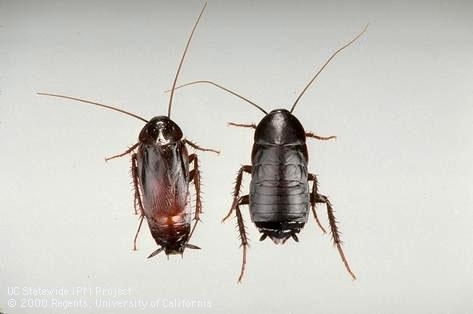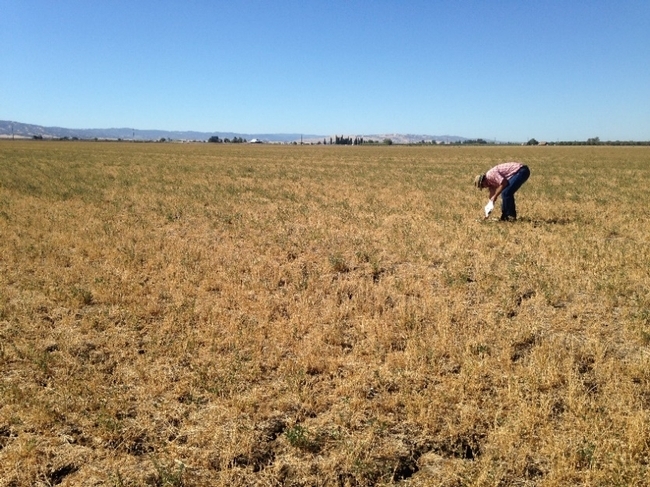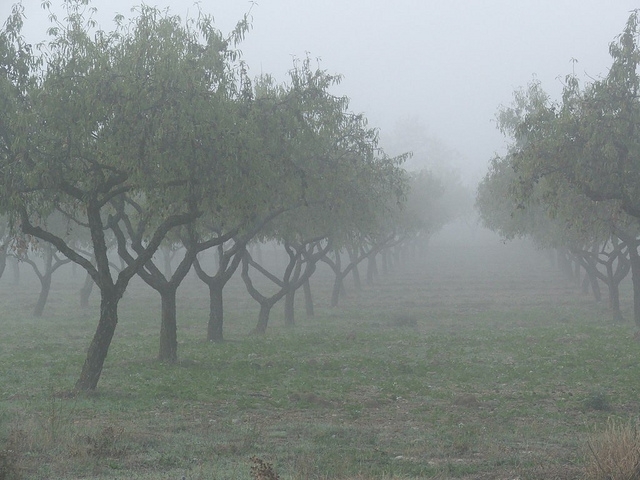Posts Tagged: drought
What can California, Israel and Australia learn from each other about drought?
Drought management experts from Israel and Australia will join U.S. scientists in California for a workshop in Modesto on Jan. 12 and 13. Growers, crop consultants, irrigation practitioners, state agency members and others are invited to participate.
The two-day event, “Proven Solutions to Drought Stress: Water Management Strategies for Perennial Crops with Limited and Impaired Water Supplies,” is designed to foster conversation on a variety of drought management aspects and strategies. The drought workshop will be held at the Modesto Centre Plaza at 1150 9th Street in Modesto.
“California, Israel and Australia have all faced recurring drought conditions of varying severity and duration,” said James Ayars, research agricultural engineer of USDA Agricultural Research Service in Parlier, Calif., who spearheaded the event to bring together this prestigious group of scientists. “In view of more frequent and more severe recurring droughts in the years to come, it makes sense for us to pool our knowledge and plan more strategically for the future.”
Over the past 20 years, USDA and University of California scientists have developed several new approaches to help growers adapt to using water more efficiently. Several UC Davis, UC Cooperative Extension and California Department of Water Resources scientists will discuss their research approach and findings in California.
Other speakers include Shabtai Cohn, head of Israel's Agricultural Research Organization Soil, Water and Environmental Sciences Institute, John Hornbuckle, associate professor at Deakin University in Australia, and other researchers from Israel and Australia.
This workshop is sponsored by the USDA Agricultural Research Service, UC Agriculture and Natural Resources (UC ANR), UC California Institute for Water Resources and the Israel Ministry of Agriculture's Agricultural Research Organization.
“We hope to share expertise gained from experiences in our respective countries and learn new approaches for growing crops with limited water and poor quality water under the prospect of increased climate variability and change,” said Daniele Zaccaria, UC ANR Cooperative Extension specialist in agricultural water management in the Department of Land, Air and Water Resources at UC Davis and one of the event organizers. “Although Australia and Israel have very different climatic and socioeconomic conditions, there may be drought management strategies and policies that work in California that they can apply, and they may have practices and policies that we can adapt to address issues in California.”
Registration is $80 and includes lunch for both days. Dec. 18 is the deadline for early registration. After Dec. 18, registration is $120 until Jan. 1, 2016, and $150 after Jan. 1. There will be no on-site registration.
Certified crop advisers can earn continuing education units: Soil & Water Management 12.0 CEU and Crop Management 0.5 CEU.
To see the agenda and to register, please visit http://www.droughtmgt.com.
Lodging is available next to the Modesto Centre Plaza at the DoubleTree Hotel at 1150 9th Street in Modesto.
UC studies soil to understand drought
A University of California, Riverside assistant professor and a team of researchers are using an often overlooked tool to fight the drought: soil.
Samantha Ying, an assistant professor of environmental sciences, will receive a $1.69 million grant from the University of California Office of the President that will allow her and her team to study the role of soil as it relates to how crops use water and respond to drought.
The grant is one of four awards totaling more than $4.8 million from University of California President Janet Napolitano's President's Research Catalyst Awards. The four winning projects were chosen from a pool of more than 180 proposals.
Ying will collaborate with researchers at UC Berkeley, UC Davis,UC Merced, Lawrence Berkeley National Lab and UC ANR research and extension centers.
California agriculture faces enormous challenges as climate changes and access to water is reduced and less predictable. California's recent drought is expected to cost the state over $2.7 billion with a loss of greater than 17,100 jobs in 2015 alone.
Soil, particularly soil carbon and its microbiome, plays a critical role in crop water use efficiency and crop response to drought. Physical, chemical and biological interactions in soil at the micrometer scale form soil aggregates that are critical in storing carbon and contain the small pores needed to retain moisture.
The grant will allow for the establishment of the University of California Consortium for Drought and Carbon Management (UC DroCaM), which will design management strategies based on understanding soil carbon, the soil microbiome and their impact on water dynamics in soil.
The team of researchers will conduct field and lab research on microbiological, biophysical, and geochemical mechanisms controlling soil aggregate formation and stability under different row crops (tomatoes, alfalfa, wheat), farming practices (carbon inputs and rotations) and irrigation methods (furrow and flood, microirrigation).
Information on mechanisms will be integrated into a regionally-scalable predictive model to describe soil carbon dynamics and estimate the response of agricultural systems to drought.
The field research will be conducted at Kearney Agricultural Research and Extension Center, West Side Research and Extension Center and Desert Research and Extension Center and the Russell Ranch Sustainable Agriculture Facility near UC Davis.
Ying's collaborators are: Kate Scow and Sanjai Parihk (UC Davis); Eoin Brodie and Margaret Torn (UC Berkeley); Asmeret Berhe and Teamrat Ghezzehei (UC Merced); and Peter Nico and William Riley (Lawrence Berkeley National Laboratory).
Napolitano launched the President's Research Catalyst Awards in December 2014. The program channels $10 million over three years to fund research in areas of strategic importance, such as sustainability and climate, equity and social justice, health care and basic discovery.
To qualify, projects must be multi-campus, multi-disciplinary efforts that offer research, teaching and learning opportunities for undergraduate and graduate students. This year, applicants were also asked to incorporate public engagement and faculty mentorship components into the projects.
To view press release visit: http://ucrtoday.ucr.edu/33686
Sorghum growing in the San Joaquin Valley is the subject of $12.3M study of crop drought tolerance
UC Agriculture and Natural Resources researchers are working in the San Joaquin Valley with UC Berkeley and Department of Energy (DOE) scientists to examine the role of epigenetics in plant survival under drought conditions, an increasing concern for agriculture as the effects of climate change are felt in California and globally.
The five-year study is funded with a $12.3 million grant from the DOE.
Epigenetics is the study of trait variations caused by environmental factors that switch genes on and off. At the UC Kearney Agricultural Research and Extension Center in Parlier and the UC West Side Research and Extension Center in Five Points, sorghum nurseries will be grown under drought and well-watered conditions to compare the environmental impacts on the plants' gene expression.
“We hope to tease out the genetics of drought tolerance in sorghum,” said Jeff Dahlberg, a sorghum expert who will manage the trials at Kearney. “Using sorghum as a model, we expect this research to help us understand drought tolerance in other crops as well.”
Dahlberg is the director of the UC Kearney Research and Extension Center. The director of the UC West Side Research and Extension, Bob Hutmacher, will manage the sorghum nursery at that facility. Funds from the DOE grant will allow Dahlberg and Hutmacher to hire two research associates and purchase new research equipment, including a new planter, a plot combine, a forage chopper and specialized tools for measuring data.
Peggy Lemaux, UC ANR Cooperative Extension plant biology specialist based at UC Berkeley, is the overall leader of the project, titled Epigenetic Control of Drought Response in Sorghum or EPICON. Other collaborators are Devin Coleman-Derr, Elizabeth Purdom and John Taylor from UC Berkeley; Chia-Lin Wei from the DOE Joint Genome Institute; and Christer Jansson from the DOE Pacific Northwest National Laboratory.
Over the next three years, a variety of observable plant traits will be followed, such as plant height and grain yield. In addition, leaf and root samples will be taken to investigate responses to drought at the molecular level, including how gene expression changes and which proteins and metabolites are altered.
Researchers will also be tracking changes in the sorghum-associated microbial communities in the soil to determine whether they correlate with changes that directly contribute to the crop's drought tolerance. It is now well known that associations of specific bacteria and fungi with plants and animals have positive effects on host fitness. For example, microbes in both plants and humans are known to help fight disease and, in the soil, can help deliver nutrients and other resources to plants.
EPICON efforts will generate a variety of large datasets, which will be shared via an open, online platform that will include methods and results.
"Availability of this data in an open forum will enable comparative genomic studies by other scientists," said Coleman-Derr, a UC Berkeley adjunct assistant professor in plant and microbial biology. "Being able to analyze the large datasets in an integrated fashion will enable a more thorough understanding of the complex and interconnected processes responsible for sorghum's ability to respond positively to drought."
The researchers expect that the project will allow better predictions of how sorghum and other cereal crops are affected by future climate scenarios, and will lead to approaches to improve growth and production of sorghum and other crops under water-limiting conditions in commercial fields and on marginal lands.
The Energy Department's Genomic Science Program is funding this project through its Office of Biological and Environmental Research.
CONTACTS:
Jeff Dahlberg, jadahlbergt@ucanr.edu, (559) 646-6060
Bob Hutmacher, rbhutmacher@ucdavis.edu, (559) 884-2411, Ext. 206
Peggy Lemaux, lemauxpg@berkeley.edu, (510) 642-1589
California drought may be causing shifts in pest invasion behavior
Several California news stories this summer have reported increased pest problems in homes and landscapes, citing the prolonged drought as the cause. Pest control companies quoted in those stories confirm that demand for their services now is much higher than in past years.
The drought may be driving more invasions by annoying insects such as ants, but not necessarily for the reasons one might expect.
Many people are asking, “Why are there so many more pests this year than usual?”
People may just be seeing more pests, according to an urban integrated pest management (IPM) advisor with UC Division of Agriculture and Natural Resources.
“The overall abundance of pests probably hasn't changed and may even have decreased as compared to wet years,” said Andrew Sutherland, Ph.D., urban IPM advisor for the San Francisco Bay Area. “The real questions we should be asking are ‘Why are these pests appearing earlier in the year?' and ‘Why are the pests appearing all at once as opposed to throughout the year?'”
Sutherland says that landscape drydown has occurred more rapidly in recent years, so there may have been a more dramatic shift from high moisture to low moisture, prompting the nuisance pests to migrate earlier in the year and in a more concentrated manner.
“This is also the first year we've seen dramatic changes made by residents due to mandated water-use restrictions,” Sutherland said. “Areas with frequent irrigation and lush landscapes aren't available this year so nuisance pests like outdoor cockroaches, ants and crickets are migrating from dry areas to seek moisture.”
This search may lead the thirsty pests to homes, garages or landscape that they haven't visited before. The IPM advisor used oriental cockroaches as an example.
“Oriental cockroaches are highly dependent on moisture and humidity and are not normally found indoors,” said Sutherland. “Outdoors, if you have an irrigation control box, leaky hosebib or water meter box, or a French drain system, that's where you'll find them. But if this water supply has been reduced or shut off, this population you didn't even know of – that may have existed for years – may crawl under doors or into foundation cracks and move indoors in search of water.”
Sutherland advises against relying on perimeter pesticide sprays to treat for nuisance pests since these applications are effective for only a short time and therefore only represent temporary solutions. Instead, Sutherland recommends using IPM methods, such as exclusion and habitat modification, which provide more long-lasting pest invasion prevention.
To learn more about home, garden, turf and landscape pests and how to exclude them, visit the UC Integrated Pest Management website at http://www.ipm.ucanr.edu/PMG/menu.house.html. For more advice on pest problems, contact the UC Master Gardeners at a local UC Cooperative Extension office http://ucanr.edu/County_Offices.
Further reading
Cockroaches http://www.ipm.ucanr.edu/PMG/PESTNOTES/pn7467.html?src=blog18995
Ants http://www.ipm.ucanr.edu/PMG/invertebrates/links.ants.html?src=blog18995
Rodents http://www.ipm.ucanr.edu/PMG/menu.house.html#VERT?src=blog18995
UC Master Gardeners http://mg.ucanr.edu/Become_a_Master_Gardener/Counties/?src=blog18995
Excluding seasonal nuisance pests http://www.ipm.ucanr.edu/PDF/PUBS/greenbulletin.2012.feb.pdf?src=blog18995
Drought tips available for farmers
Drought strategies for managing alfalfa and many other crops are available free from UC Agriculture and Natural Resources. As California endures a fourth year of drought and ever-tightening water supplies, water-management strategies have become even more critical to farmers.
To help farmers make the best use of the water they have available, a series of new and updated drought tips fact sheets has been developed by UC ANR scientists and funded by the California Department of Water Resources.
“These drought tips provide irrigation management recommendations for a broad range of agricultural crops and under different water supply conditions,” said Daniele Zaccaria, UC ANR Cooperative Extension agricultural water management specialist at UC Davis and major organizer of the drought tip series. “The information in these tips will be of practical use for growers and other water-related stakeholders now and into the future as our agricultural community continues to adapt to climate variability and to a changing water supply situation.”
UC ANR scientists have identified best management practices for a wide range of annual and permanent crops and irrigation systems and methods during the drought. In the drought tips series, they also give advice for managing soil salinity and using shallow groundwater for irrigating crops. For beef cattle, they provide recommendations for culling herds and feeding to supplement grazing.
The following drought tips are currently available for free download at http://ucanr.edu/drought-tips:
- Drought strategies for alfalfa
- Drought management for California almonds
- Use of shallow groundwater for crop production
- Drought strategies for walnuts
- Fog contribution to crop water use
- Reclaiming Saline, Sodic and Saline-Sodic Soils
Decades of UC ANR research underlie the information contained in the drought tips. In the 1970s and again in the 1990s, UC ANR partnered with DWR to develop a series of drought management fact sheets.
“DWR has worked with UC ANR to update the drought tips and make sure the latest and best information on water management is available to growers,” said Peter Brostrom, DWR Water Use Efficiency Section Manager.
The California Institute for Water Resources, which coordinates water-related research and extension education across the 10 UC campuses and UCANR, has the drought tips and more drought resources online at http://ciwr.ucanr.edu.
“Even if El Niño brings rain this fall, water scarcity will continue to impact California farmers,” said Doug Parker, director of UC ANR's California Institute for Water Resources. “As climate change continues to reduce the average annual snowpack, it is likely that droughts in California will become more frequent and severe in the years to come.”
UC ANR's California Institute for Water Resources and the California Department of Water Resources also offer drought-related information in a series of videos. Water experts from UC and other agencies and institutions have recorded presentations on high-priority drought topics. Currently 38 videos can be accessed for free on computers and mobile devices at http://ucanr.edu/insights.
UC Agriculture and Natural Resources researchers and educators draw on local expertise to conduct agricultural, environmental, economic, youth development and nutrition research that helps California thrive. Learn more at ucanr.edu

